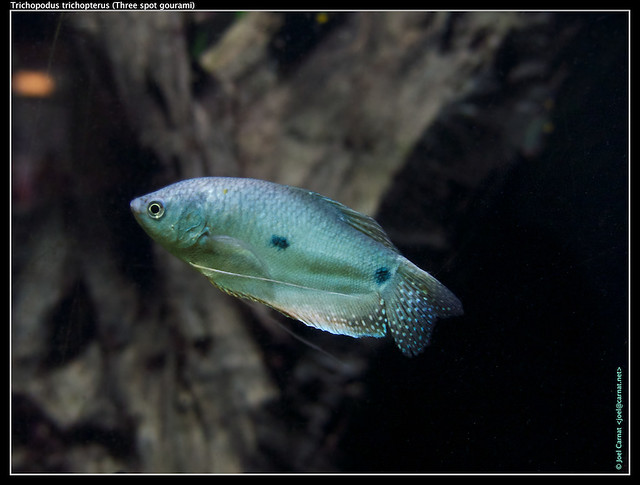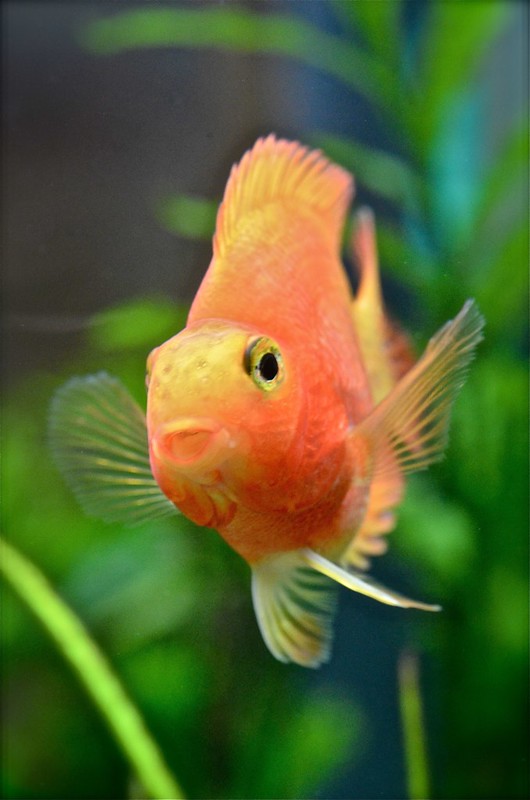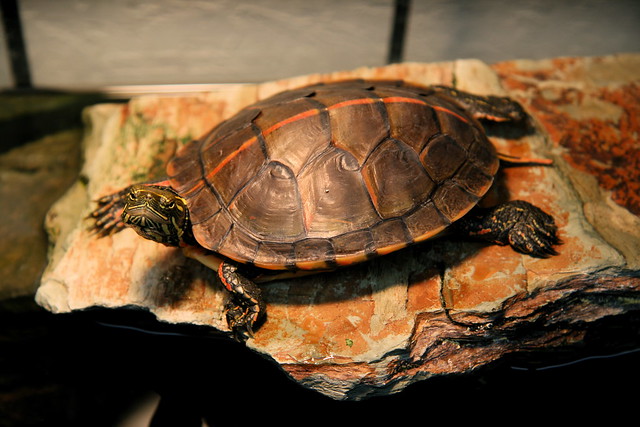 |
| Photo by Joel Carnat |
If you try to find out three spots on their body, you may get confused. In reality, there are only two spots - one in the middle of their body and the other one at the beginning of their tail. However, their eye is also considered one spot, which makes them a three spots fish.
Blue Gouramis can change their color according to their mood. Especially during the spawning period, their mood is the best and their colors really shine. They have a labyrinth organ which means they can gulp care directly from the atmosphere. This feature makes them tougher because they can easily survive in low oxygen water.
As the adults grow up to 5 inches, they are ready for reproduction. Their colors will brighten and they tend to get aggressive. In case of females, their breast will be swollen. During the spawning period, you should provide enough space for them to swim and hide because due to excessive aggression by males, they may get injured.
When the spawning begins, the male will build up a bubble nest. After bidding, the male will try to encourage the female to go under it. He will swim around the female and indicate her to go under the bubble nest. When the female is ready, she will bite the male at his back and in response, the male will brush his body against the belly of the female.
During the spawning process, the male will wrap his body tightly around the body of the females to ensure that the eggs will float to the surface without any hassle. As the sperms will survive only for a few minutes, it is important for the male to ensure that they are as close to the eggs as possible.
As soon as the sperms reach the bubbles nest, the eggs get fertilized. This process is repeated for a lot of times and it may take several hours. The eggs are produced in thousands so the possibility of new ones coming out is high.
Ones this process is completed, the job of the females is over. At this point in time, you should remove all the females from the breeding tank because the males will attack them for protecting the eggs! Till the time of hatching, the males will protect the eggs. They will also scrutinize the eggs and rearrange them. During this time, you will see an interesting incidence - the males will spit the streams of water over them for cleaning and positioning the eggs. This spitting is also useful for preventing insects to hang around the eggs.
The hatching time is about 30 to 40 hours. The new ones will come out and they will start eating right from the first day. This is a crucial time for the fry because they're all of the organs including the labyrinth organ will be developed. They should be fed with good live food like baby shrimp during this time.
The new ones should be kept in a separate tank for at least two months. Once they are fully grown, you can shift them to the main aquarium.
Chintamani Abhyankar is a goldfish enthusiast and has been raising and breeding goldfish for many years. He is an expert on their care and an advocate for raising healthy goldfish the natural way.
Article Source: EzineArticles
|






